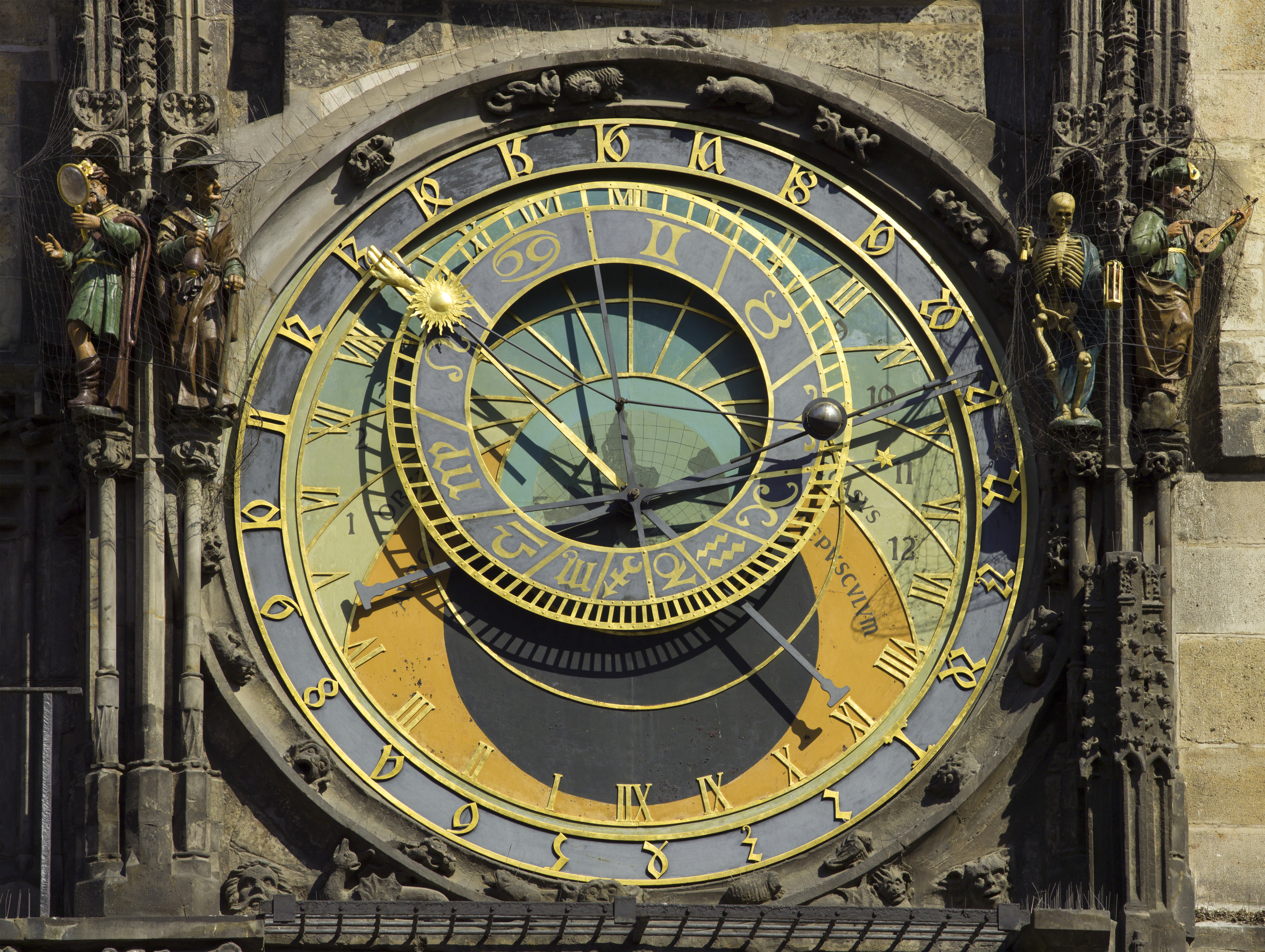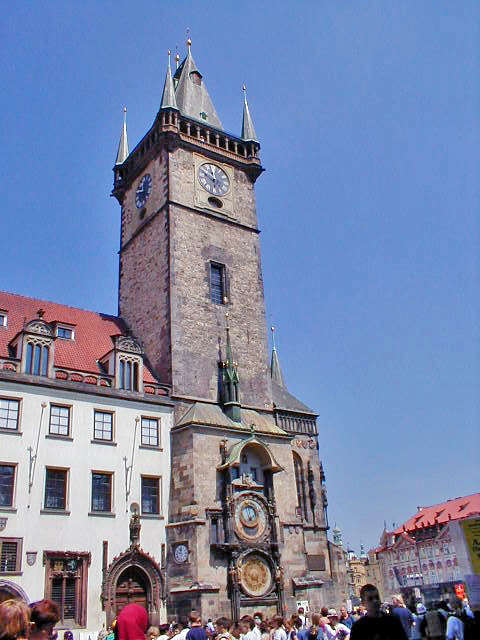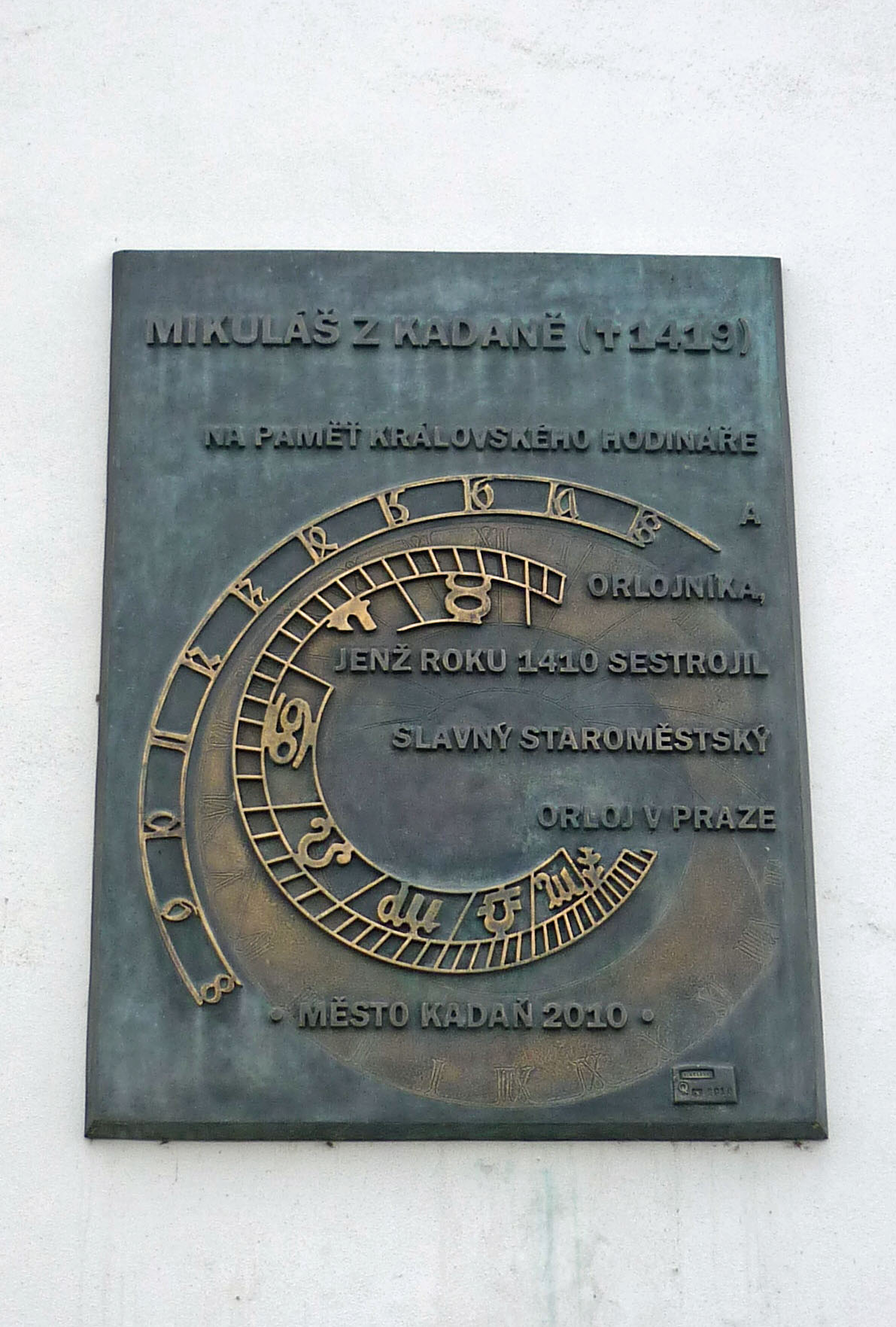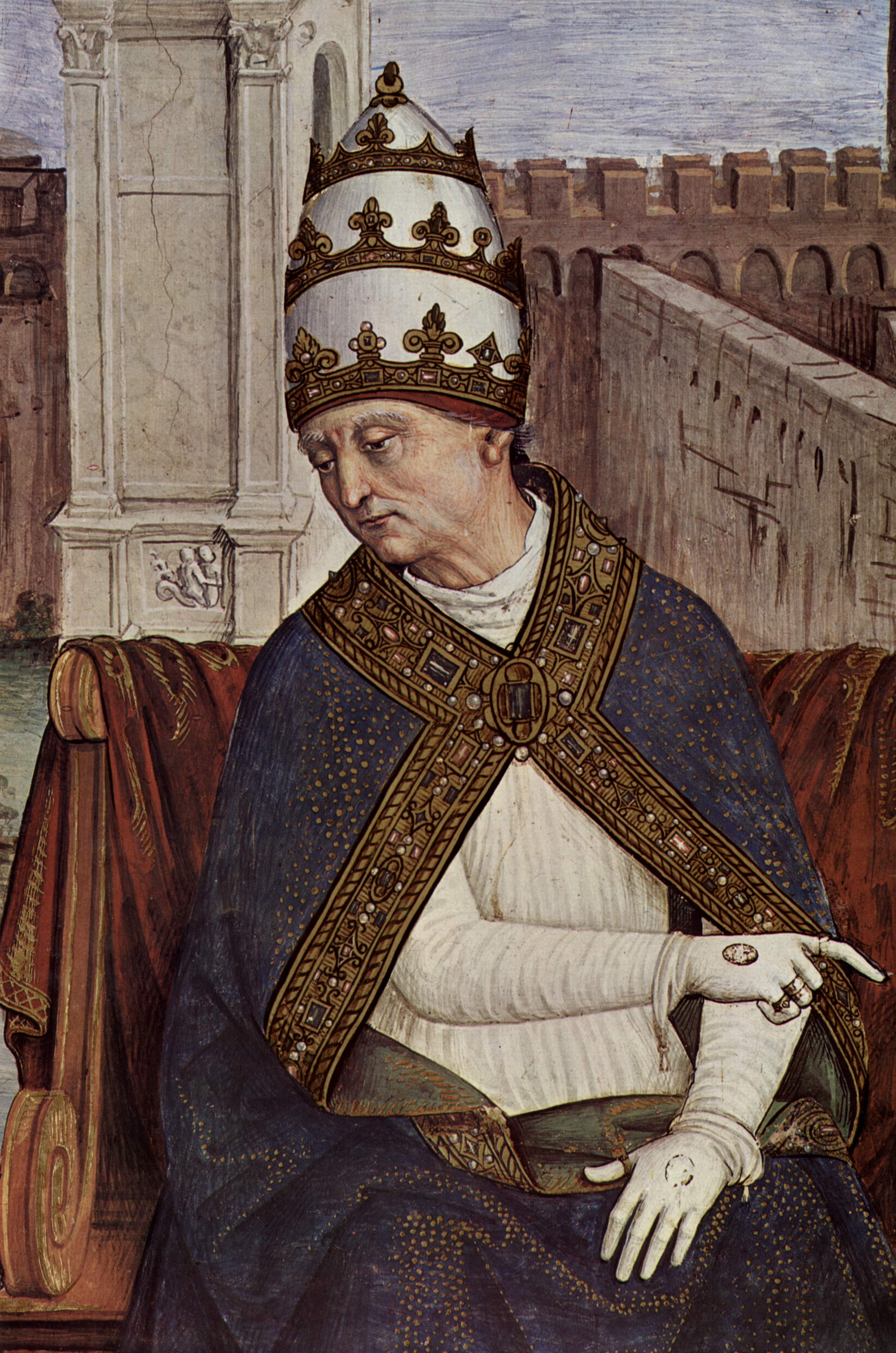|
Jan Šindel
Jan Šindel (1370s – between 1455 and 1457), also known as Jan Ondřejův ( or ''Joannes de Praga''), was a Czech medieval scientist and Catholic priest. He was a professor at Charles University in Prague and became the rector of the university in 1410. He lectured on mathematics and astronomy and was also a personal astrologer and physician of kings Wenceslaus IV of Bohemia and his brother Holy Roman Emperor Sigismund. Life Jan Šindel was born in Hradec Králové probably in the 1370s. As a young man he came to Prague to study at Charles University. In 1395 or 1399, he became the Master of Arts at Prague University. In 1406, he worked at the parish school of the St. Nicolas Church in Malá Strana in Prague. Later he worked as a teacher of mathematics in Vienna, where he also studied medicine. Then he came back to Prague and became the professor of astronomy at Charles University, where he became Doctor of Medicine and rector of the university in 1410. At the beginning he ... [...More Info...] [...Related Items...] OR: [Wikipedia] [Google] [Baidu] |
Canon (priest)
Canon () is a Christian title usually used to refer to a member of certain bodies in subject to an ecclesiastical rule. Originally, a canon was a cleric living with others in a clergy house or, later, in one of the houses within the precinct of or close to a cathedral or other major church and conducting his life according to the customary discipline or rules of the church. This way of life grew common (and is first documented) in the 8th century AD. In the 11th century, some churches required clergy thus living together to adopt the rule first proposed by Saint Augustine that they renounce private wealth. Those who embraced this change were known as Augustinians or Canons Regular, whilst those who did not were known as secular canons. Secular canons Latin Church In the Latin Church, canons are the members of a chapter, that is a body of senior clergy overseeing either a cathedral (a cathedral chapter) or a collegiate church. Depending on the title of the church, several lan ... [...More Info...] [...Related Items...] OR: [Wikipedia] [Google] [Baidu] |
1370 Births
137 may refer to: *137 (number) *137 BC *AD 137 *137 (album), an album by The Pineapple Thief *137 (MBTA bus) *137 (New Jersey bus) 137 may refer to: *137 (number) *137 BC *AD 137 *137 (album), an album by The Pineapple Thief *137 (MBTA bus) The Massachusetts Bay Transportation Authority bus division operates 151 bus routes in the Boston, Massachusetts metropolitan area. A ... * 137 Meliboea, a main-belt asteroid {{numberdis ... [...More Info...] [...Related Items...] OR: [Wikipedia] [Google] [Baidu] |
Šindel Sequence
In additive combinatorics, a Šindel sequence is a periodic sequence of integers with the property that its partial sums include all of the triangular numbers. For instance, the sequence that begins 1, 2, 3, 4, 3, 2 is a Šindel sequence, with the triangular partial sums etc. Another way of describing such a sequence is that it can be partitioned into contiguous subsequences whose sums are the consecutive integers: This particular example is used in the gearing of the Prague astronomical clock, as part of a mechanism for chiming the clock's bells the correct number of times at each hour. The Šindel sequences are named after Jan Šindel, a Czech scientist in the 14th and 15th centuries whose calculations were used in the design of the Prague clock. The definition and name of these sequences were given by Michal Křížek, Alena Šolcová, and Lawrence Somer, in their work analyzing the mathematics of the Prague clock. If s denotes the sum of the numbers within a single per ... [...More Info...] [...Related Items...] OR: [Wikipedia] [Google] [Baidu] |
Prague Orloj
The Prague astronomical clock or Prague Orloj ( ) is a Middle Ages, medieval astronomical clock attached to the Old Town Hall (Prague), Old Town Hall in Prague, the capital of the Czech Republic. Description The Orloj is mounted on the southern wall of Old Town Hall (Prague), Old Town Hall in the Old Town Square. The clock mechanism has three main components – the astronomical dial, representing the position of the Sun and Moon in the sky and displaying various astronomical details; statues of various Saint#Catholic Church, Catholic saints stand on either side of the clock; "The Walk of the Apostles in the New Testament, Apostles", an hourly show of moving Apostle figures and other sculptures, notably a figure of a skeleton that represents Personifications of death, Death, striking the time; and a calendar dial with medallions representing the months. According to local legend, the city will suffer if the clock is neglected and its good operation is placed in jeopardy; a ... [...More Info...] [...Related Items...] OR: [Wikipedia] [Google] [Baidu] |
Mikuláš Of Kadaň
Mikuláš of Kadaň () (born 1350, Kadaň – died 1419, Prague) was an Imperial clockmaker. With Jan Šindel, Mikuláš designed the oldest part of the Orloj (which also known as Prague Astronomical Clock). The clock was modified by Master Hanuš, who was mistakenly identified as the creator of the clock in a legend related by Alois Jirásek. See also * Astronomical clock References 14th-century people from Bohemia 15th-century people from Bohemia Engineers from Prague People from Kadaň 1350 births 1419 deaths Clockmakers {{CzechRepublic-hist-stub ... [...More Info...] [...Related Items...] OR: [Wikipedia] [Google] [Baidu] |
Tycho Brahe
Tycho Brahe ( ; ; born Tyge Ottesen Brahe, ; 14 December 154624 October 1601), generally called Tycho for short, was a Danish astronomer of the Renaissance, known for his comprehensive and unprecedentedly accurate astronomical observations. He was known during his lifetime as an astronomer, astrologer, and alchemist. He was the last major astronomer before the invention of the telescope. Tycho Brahe has also been described as the greatest pre-telescopic astronomer. In 1572, Tycho noticed a completely SN 1572, new star that was brighter than any star or planet. Astonished by the existence of a star that ought not to have been there, he devoted himself to the creation of ever more accurate instruments of measurement over the next fifteen years (1576–1591). Frederick II of Denmark, King Frederick II granted Tycho an estate on the island of Hven and the money to build Uraniborg, the first large observatory in Christian Europe. He later worked underground at Stjerneborg, where he ... [...More Info...] [...Related Items...] OR: [Wikipedia] [Google] [Baidu] |
Pope Pius II
Pope Pius II (, ), born Enea Silvio Bartolomeo Piccolomini (; 18 October 1405 – 14 August 1464), was head of the Catholic Church and ruler of the Papal States from 19 August 1458 to his death in 1464. Aeneas Silvius was an author, diplomat, and orator, and private secretary of Antipope Felix V and then the Emperor Frederick III, and then Pope Eugenius IV. He participated in the Council of Basel, but left it in 1443 to follow Frederick, whom he reconciled to the Roman obedience. He became Bishop of Trieste in 1447, Bishop of Siena in 1450, and a cardinal in 1456. He was a Renaissance humanist with an international reputation. Aeneas Silvius' longest and most enduring work is the story of his life, the ''Commentaries'', which was the first autobiography of a pope to have been published. It appeared posthumously, in 1584, 120 years after his death. Early life Aeneas was born in Corsignano in Sienese territory of a noble but impoverished family. His father Silvio was a s ... [...More Info...] [...Related Items...] OR: [Wikipedia] [Google] [Baidu] |
Vyšehrad Chapter
The Vyšehrad Chapter (), officially the Royal Collegiate Chapter of Ss. Peter and Paul at Vyšehrad (), is a collegiate chapter established at the church dedicated to Saints Peter and Paul in Vyšehrad (now in Prague Prague ( ; ) is the capital and List of cities and towns in the Czech Republic, largest city of the Czech Republic and the historical capital of Bohemia. Prague, located on the Vltava River, has a population of about 1.4 million, while its P ...) around 1070 by Vratislaus II, the first king of Bohemia. Footnotes Sources * * External links * History of Prague 11th century in Bohemia 1070 establishments in Europe {{CzechRepublic-hist-stub ... [...More Info...] [...Related Items...] OR: [Wikipedia] [Google] [Baidu] |
Dean (Christianity)
A dean, in an ecclesiastical context, is a cleric holding certain positions of authority within a religious hierarchy. The title is used mainly in the Catholic Church, the Anglican Communion, and many Lutheran denominations. A dean's assistant is called a sub-dean. History Latin in the Roman military was the head of a group of ten soldiers within a '' centuria'', and by the 5th century it was the head of a group of ten monks. It came to refer to various civil functionaries in the later Roman Empire.''Oxford English Dictionary'' s.v.' Based on the monastic use, it came to mean the head of a chapter of canons of a collegiate church or cathedral church. Based on that use, deans in universities now fill various administrative positions. Latin ''decanus'' should not be confused with Greek ''diákonos'' (διάκονος), from which the word deacon derives, which describes a supportive role. Officials In the Catholic Church, the Dean of the College of Cardinals and the ... [...More Info...] [...Related Items...] OR: [Wikipedia] [Google] [Baidu] |
Nuremberg
Nuremberg (, ; ; in the local East Franconian dialect: ''Nämberch'' ) is the Franconia#Towns and cities, largest city in Franconia, the List of cities in Bavaria by population, second-largest city in the States of Germany, German state of Bavaria, and its 544,414 (2023) inhabitants make it the List of cities in Germany by population, 14th-largest city in Germany. Nuremberg sits on the Pegnitz (river), Pegnitz, which carries the name Regnitz from its confluence with the Rednitz in Fürth onwards (), and on the Rhine–Main–Danube Canal, that connects the North Sea to the Black Sea. Lying in the Bavarian Regierungsbezirk, administrative region of Middle Franconia, it is the largest city and unofficial capital of the entire cultural region of Franconia. The city is surrounded on three sides by the , a large forest, and in the north lies (''garlic land''), an extensive vegetable growing area and cultural landscape. The city forms a continuous conurbation with the neighbouring ... [...More Info...] [...Related Items...] OR: [Wikipedia] [Google] [Baidu] |








